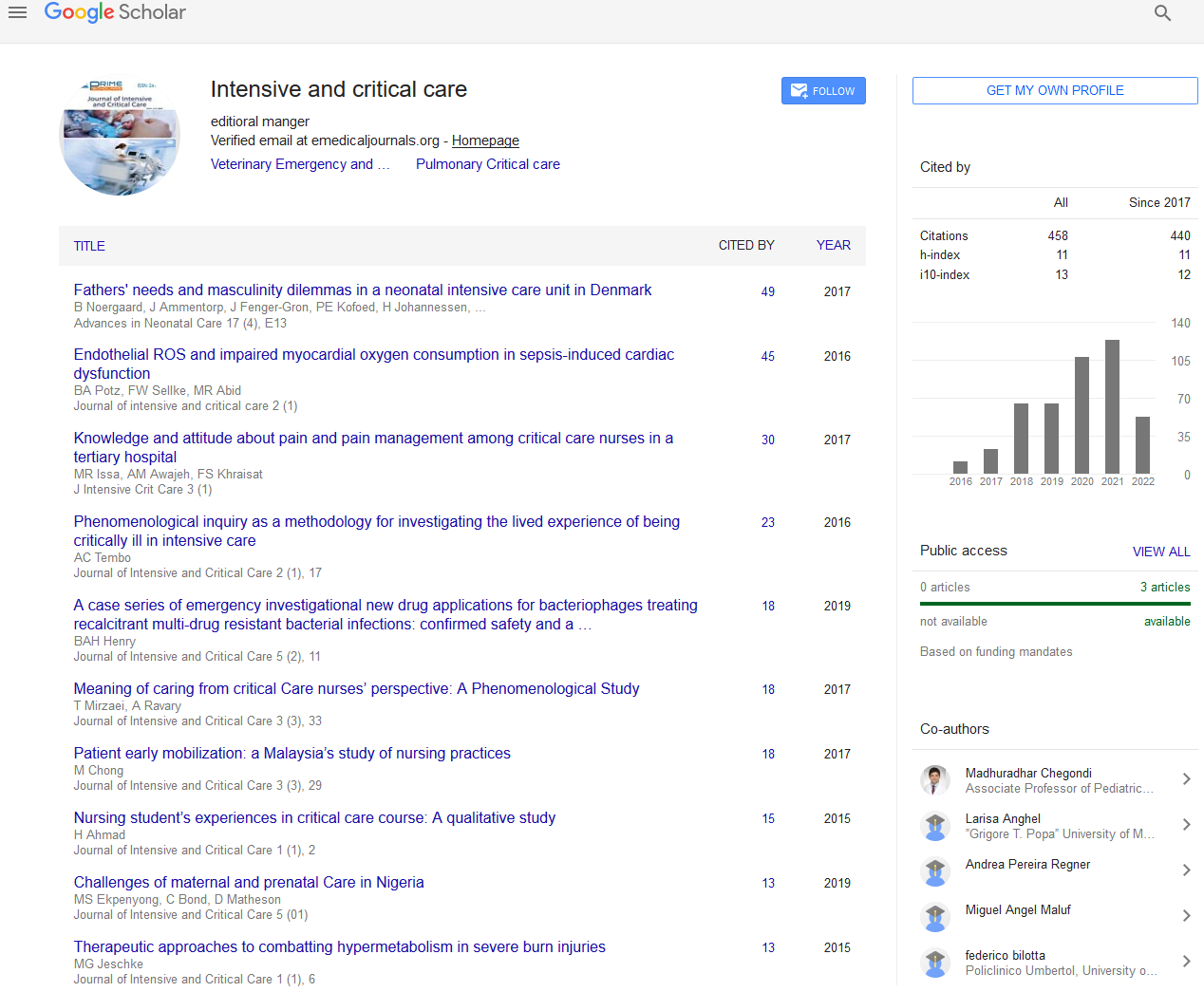Short Communication - (2022) Volume 8, Issue 6
Effectiveness of Flipped Classroom in Nursing Education: A Systematic Review of Systematic and Integrative Reviews
Cathrine Mathisen*
Department of Nursing and Health Sciences, University of South-Eastern Norway, Norway
*Correspondence:
Cathrine Mathisen,
Department of Nursing and Health Sciences, University of South-Eastern Norway,
Norway,
Email:
Received: 30-May-2022, Manuscript No. IPJICC-22-14234;
Editor assigned: 01-Jun-2022, Pre QC No. IPJICC-22-14234 (PQ);
Reviewed: 15-Jun-2022, QC No. IPJICC-22-14234;
Revised: 20-Jun-2022, Manuscript No. IPJICC-22-14234 (R);
Published:
27-Jun-2022, DOI: 10.35248/2471-8505.8.6.86
Introduction
Nursing education refers to formal learning and training in the science of nursing. It includes the functions and tasks involved in the physical care of patients and the combination of different disciplines that facilitate and contribute to the maintenance of patient health recovery [1]. Nursing and nursing education have changed significantly over the centuries. This story re- veals a constant struggle for autonomy and professionalism. Historically, there have been many influences on nursing prac- tice, including women’s struggles for professional recognition and status, religion, warfare, technology, and social attitudes. These factors continue to influence care today. For the past few decades, the profession has worked on its image. Early nurses had no formal training specifically designed to prepare them to care for the sick [2]. The Kaiserwelt School is her one of the programs established to train women to care for the sick and the poor. The La Source program was founded in Germa- ny in 1859 to prepare ordinary women to care for the sick in their own homes. The theory was 1 hour of class each day for 5 months for a total of 120 hours. Students studied anatomy, physiology, hygiene, pathology, and nursing procedures. At the end of the program, students took an oral exam. The students did not wear uniforms and were not called nurses [3]. The La Source program he later developed into a three year program. After passing the Comprehensive Exam, the first nine months will be considered a probationary period. The student became a regular student and completed a three year program.
Description
In recent decades, changes in training have given way to more practice oriented, but often ritualistic, traditional preparatory training structures. This often includes interprofessional education and the use of research in clinical and managerial decision making. It can be argued that while orthodox education pro- vided a stronger foundation of practical skills, it emphasized the relationship between maids and doctors [4]. Developing confident and inquisitive graduates who integrate equally with the team. In some countries, not all qualification courses have a diploma. Even before Florence Nightingale, nursing was tra- ditionally viewed as an apprenticeship, and although there was always a proportion of male nurses, especially in psychiatric services, it was often performed by young women in religious institutions such as monasteries. 1859, Valérie de Gasparin and her husband, Agenor de Gasparin, open L’Ecole La Source, the world’s first nursing school, in Lausanne, Switzerland [5]. Oth- er nurses of the time, notably Ethel Gordon Fenwick, were in favor of formal nursing registration and curricula formally lim- ited to higher education rather than hospital coverage. Nursing education in the United States is conducted at universities, but it is unknown who offered the first degree program. As far as is known, the Yale School of Nursing became the first autono- mous nursing school in the United States in her 1923 [3].
Conclusion
Nursing education is also linked to the training of professionals in related fields of health and development. Education includes both teaching and learning knowledge, appropriate behavior and professional competence. It therefore focuses on skill, pro- fessional or vocational development, and spiritual, moral and aesthetic development. Aiming at the harmonious develop- ment of students’ physical, intellectual, social, emotional, men- tal and aesthetic strengths and abilities, at all stages of health and disease, in a variety of situations, and at all ages of people professionally cared for. In addition, process training is also very important. Insertion of IV and urinary catheters, change of sterile dressings, proper administration of medications, physi- cal examination, bedside care behaviors, and other critical skills. After mastering the foundational knowledge of the first semes- ter, students’ progress through the departments of Obstetrics, Mental Health, Medicine, Surgery, Oncology, Critical Care, and Pediatrics to get a complete picture of nursing and its compo- nents. Many nursing students and nursing schools use medical and health education software as learning or training aid.
Acknowledgement
None.
Conflicts of Interest
The authors declare no conflict of interest.
REFERENCES
- Barbour C, Schuessler JB (2019) A preliminary framework to guide implementation of the flipped classroom method in nursing education. Nurse Educ Pract. 34:36-42.
[Crossref] [Google Scholar] [PubMed]
- Betihavas V, Bridgman H, Kornhaber R, Cross M (2016) The evidence for “flipping out”: A systematic review of the flipped classroom in nursing education. Nurse Educ Today. 38:15-21.
[Crossref] [Google Scholar] [PubMed]
- Chen F, Lui AM, Martinelli SM (2017) A systematic review of the effectiveness of flipped classrooms in medical education. Med Educ. 51(6):585-597.
[Crossref] [Google Scholar] [PubMed]
- Evans L, Bosch MLV, Harrington S, Schoofs N, Coviak C (2019) Flipping the classroom in health care higher education: A systematic review. Nurse Educ. 44(2):74-78.
[Crossref] [Google Scholar] [PubMed]
- Hu R, Gao H, Ye Y, Ni Z, Jiang N, et al. (2018) Effectiveness of flipped classrooms in Chinese baccalaureate nursing education: A meta-analysis of randomized controlled trials. Int J Nurs Stud. 79:94-103.
[Crossref] [Google Scholar] [PubMed]
Citation: Mathisen C (2022) Effeciveness off Flipped Classroom in Nursing Educaion: A Systemaic Review off Systemaic and Integrative Reviews. J Intensive Crit Care. 8:86.
Copyright: © 2022 Mathisen C. This is an open-access aricle distributed under the terms off the Creaive Commons Atribuion Li- cense, which permits unrestricted use, distribution, and reproduction in any medium, provided the original author and source are credited.

